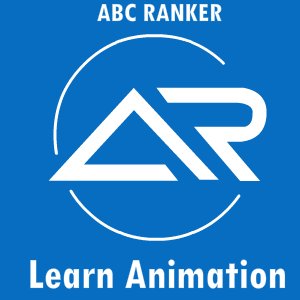1. Master the Art of Animation Introduction
Animation is a captivating art form that brings stories and characters to life through the use of movement and visual effects. Whether you’re interested in creating your animated films, designing video game characters, or adding a touch of animation to your website or social media content, mastering the art of animation can open up a world of creative possibilities.
This comprehensive guide is designed for beginners who are eager to dive into the world of animation. From understanding the basic principles of animation to learning about essential software and tools, this guide will provide you with a solid foundation to begin your journey as an animation wallah. So, get ready to learn animation in Hindi and embark on an exciting adventure into the world of animated storytelling!
2. Understanding the basics of animation
Animation is a complex art form that requires a thorough understanding of its basic principles. In this section, we will delve into the fundamental concepts that every aspiring animator should master.
Timing and spacing are two crucial elements in animation. Timing refers to the speed at which an action is presented, while spacing determines the distance and position between objects or characters in each frame. By manipulating these factors, animators can create the illusion of weight, volume, and fluidity in their work.
Next, we will explore the principle of squash and stretch. This technique helps bring life and flexibility to characters and objects, making them more believable and engaging. By exaggerating certain movements and proportions, animators can add depth and realism to their animations.
Additionally, we will discuss the principles of anticipation, follow-through, and overlapping action. These principles contribute to the natural flow of movement in animation, mimicking the way objects and characters react in the real world.
Understanding these basic principles will serve as a solid foundation for your journey into the world of animation. So, let’s dive in and discover the art of bringing life to still images through the magic of animation!
3. Choosing the right animation software
When it comes to animation, choosing the right software can make all the difference in your journey as a beginner. With numerous options available in the market, it can be overwhelming to determine which one suits your needs. In this section, we will explore some popular animation software and help you make an informed decision.
Adobe Animate is a powerful tool that offers a wide range of features for both 2D and 3D animation. It allows you to create rich and interactive animations with a user-friendly interface. Another popular choice is Toon Boom Harmony, which is widely used in the animation industry. It offers advanced tools for character rigging and frame-by-frame animation.
If you are looking for free and open-source software, Blender is an excellent option. It provides a comprehensive set of tools for 3D modeling, animation, and rendering. For beginners on a budget, Pencil2D is a simple yet effective software that allows you to create traditional hand-drawn animations.
Remember, the software you choose should align with your goals and the type of animation you want to create. Take your time to explore different options and consider their compatibility with your computer system and learning curve. With the right software, you will be able to bring your creative vision to life.
Join Live Class Adobe Animate cc Join Now
4. Developing a storyboard and creating characters
Developing a storyboard is a crucial step in the animation process as it helps you visualize and plan your animation sequence. A storyboard is a series of sketches that outline the key scenes and actions of your animation. It acts as a blueprint, guiding you throughout the production process.
To start, think about the overall concept and narrative of your animation. What story do you want to tell? What characters and settings will be involved? Once you have a clear vision, begin sketching out the different scenes and their sequence. You can use traditional pen and paper or digital tools like drawing tablets or software.
Creating memorable characters is essential to engaging your audience. Think about their personalities, their physical appearances, and how they move. Give them unique traits and characteristics that will make them relatable to viewers.
Remember, the storyboard and character development should go hand in hand. Your characters should move and interact within the scenes you have outlined in your storyboard. Take the time to refine and iterate on your storyboard and character designs until you are satisfied with the final result.
In the next section, we will delve into the animation techniques and tricks that will help bring your storyboard and characters to life. Stay tuned!
5. Mastering different animation techniques
In this section, we will explore various animation techniques that you can use to bring your storyboard and characters to life. As a beginner, it’s important to experiment and familiarize yourself with different techniques to find the one that suits your style and project.
1. Traditional Animation: Also known as hand-drawn animation, this technique involves drawing each frame by hand. It requires skill, patience, and a keen eye for detail. Traditional animation can deliver a classic look and feel, perfect for bringing a sense of nostalgia or a whimsical touch to your animation.
2. 2D Animation: This technique involves creating characters and backgrounds in a two-dimensional space. With the advancements in digital tools and software, 2D animation has become more accessible and versatile. It allows for creative freedom and enables you to add depth and dimension to your characters and scenes.
3. Stop Motion Animation: This technique involves manipulating physical objects or puppets frame by frame to create the illusion of movement. It requires meticulous planning and precision, as you will be capturing a series of still images and then playing them back to create motion. Stop motion animation can bring a unique and tactile charm to your projects.
4. 3D Animation: This technique involves creating characters and environments in a three-dimensional space using computer software. 3D animation allows for realistic and dynamic movements, and it is widely used in the film and gaming industry. It requires a good understanding of software and 3D modeling techniques.
Whichever technique you choose, remember that practice makes perfect. Take the time to experiment with different tools and techniques to find your style and refine your skills. In the next section, we will discuss tips and tricks to enhance your animation process and make it more efficient. Stay tuned!
6. Adding sound and special effects
In this next section, we will explore the exciting world of sound and special effects in animation. Adding sound and special effects to your animations can truly elevate them to the next level and create a more immersive experience for your audience.
Sound effects, such as footsteps, door slams, or even background ambiance, can bring life and realism to your animations. They help to enhance the overall mood and atmosphere, and can effectively convey emotions or actions. You can use pre-recorded sound effects or create your own using various tools and software available.
Additionally, special effects can add that wow factor to your animations. Whether it’s creating explosions, magical spells, or realistic weather effects, special effects play a crucial role in creating a visually stunning animation. There are numerous software and plugins that can assist you in creating stunning effects, or you can also experiment with practical effects techniques.
Remember to pay attention to the timing and synchronization between your visuals and sound effects. It’s important to make sure they are well-coordinated to create a seamless and immersive experience.
In the next section, we will discuss the importance of storytelling in animation and how to effectively convey your message through visuals and narratives. Stay tuned for more tips and techniques to master the art of animation!
7. Fine-tuning your animations
In this next section, we will delve into the crucial aspect of fine-tuning your animations. Once you have incorporated sound effects and special effects into your animations, it’s essential to pay attention to the details to ensure a polished final product.
Firstly, consider the timing and pacing of your animations. Every movement and transition should be intentional and serve a purpose in telling your story. Play around with the timing and adjust the duration of each frame to create a sense of rhythm and flow.
Secondly, scrutinize the movement and gestures of your characters. Smooth and natural movements can bring your animations to life. Use reference videos or observe real-life motion to give your characters a sense of depth and believability.
Lastly, evaluate the overall composition and visual elements within your animations. Pay attention to the framing, use of colors, and camera angles to create visually engaging scenes. Experiment with different compositions and perspectives to enhance the visual storytelling aspect of your animation.
By fine-tuning these key elements, you can take your animations from good to great. In the next section, we will explore the wide range of animation software available and help you choose the best fit for your needs. Stay tuned for more valuable insights on mastering the art of animation!
8. Showcasing your work and seeking feedback
Once you have perfected your animations, it’s time to showcase your work to the world and seek feedback. Sharing your animations with others not only allows you to get valuable input but also helps you build a portfolio and establish your presence in the animation community.
One of the best ways to showcase your work is by creating an online portfolio. Create a dedicated website or use platforms like Behance or ArtStation to showcase your animations. Make sure to organize your work by categories, such as 2D or 3D animations, and provide a brief description of each piece.
Social media platforms like Instagram, YouTube, or Vimeo can also be powerful tools to share your animations. Consider creating a dedicated page or channel for your animations, and regularly post your work to engage with your audience and attract potential collaborators or clients.
Once you start sharing your animations, actively seek feedback from fellow animators or professionals in the field. Engage with animation communities, join forums, or attend animation conferences and workshops to connect with like-minded individuals who can offer constructive criticism and help you improve.
Remember, feedback is essential for growth, so keep an open mind and embrace the opportunity to learn from others. In the next section, we will delve into advanced animation techniques and explore how to push the boundaries of what you can achieve with your animations. Stay tuned for more valuable insights on mastering the art of animation!
9. Continuously learning and improving as an animator
To truly master the art of animation, it is essential to continuously learn and improve your skills. As technology rapidly evolves, new techniques and tools emerge, offering endless possibilities for creative expression.
The animation industry is a constantly evolving field, and staying up-to-date with the latest trends and advancements is crucial. Subscribe to industry publications and blogs, follow influential animators on social media, and participate in online courses or tutorials to expand your knowledge base.
Experimenting with different animation styles and techniques can also help you push the boundaries of your abilities. Don’t be afraid to try new things and step out of your comfort zone. Take on challenging projects that require you to learn and master new skills, as this will not only add to your portfolio but also enhance your expertise.
Additionally, seeking feedback and critique from professionals in the industry will enable you to gain valuable insights and fine-tune your animations. Attend animation conferences, workshops, or networking events to connect with seasoned animators and learn from their experiences.
Remember, animation is an art form that requires a combination of technical skill and creative vision. It takes time and dedication to become a master animator, so embrace every opportunity to learn, grow, and refine your craft. Stay committed to your passion, and the results will undoubtedly speak for themselves.
In the next section, we will dive into the world of storytelling in animation and explore how to create compelling narratives that captivate audiences. Get ready to unleash your storytelling skills and take your animations to the next level. Stay tuned for more valuable insights on mastering the art of animation!
10. Conclusion: The journey to mastering animation
In conclusion, mastering the art of animation is a journey that requires continuous learning, experimentation, and dedication. By staying up-to-date with the latest trends and advancements in the industry, expanding your knowledge base, and challenging yourself with new projects, you can enhance your skills and expertise.
Seeking feedback and critique from professionals in the field is invaluable for gaining insights and refining your animations. Make an effort to connect with experienced animators through conferences, workshops, and networking events.
Remember, animation is a unique combination of technical skill and creative vision. Embrace every opportunity to learn, grow, and refine your craft. Stay committed to your passion and continue to push the boundaries of your abilities.
By mastering the art of animation, you have the power to captivate audiences and tell compelling stories. So, unleash your storytelling skills and let your animations speak for themselves. Thank you for joining us on this comprehensive guide to mastering the art of animation. Stay tuned for more valuable insights and tips in our future blog posts. Keep animating!




